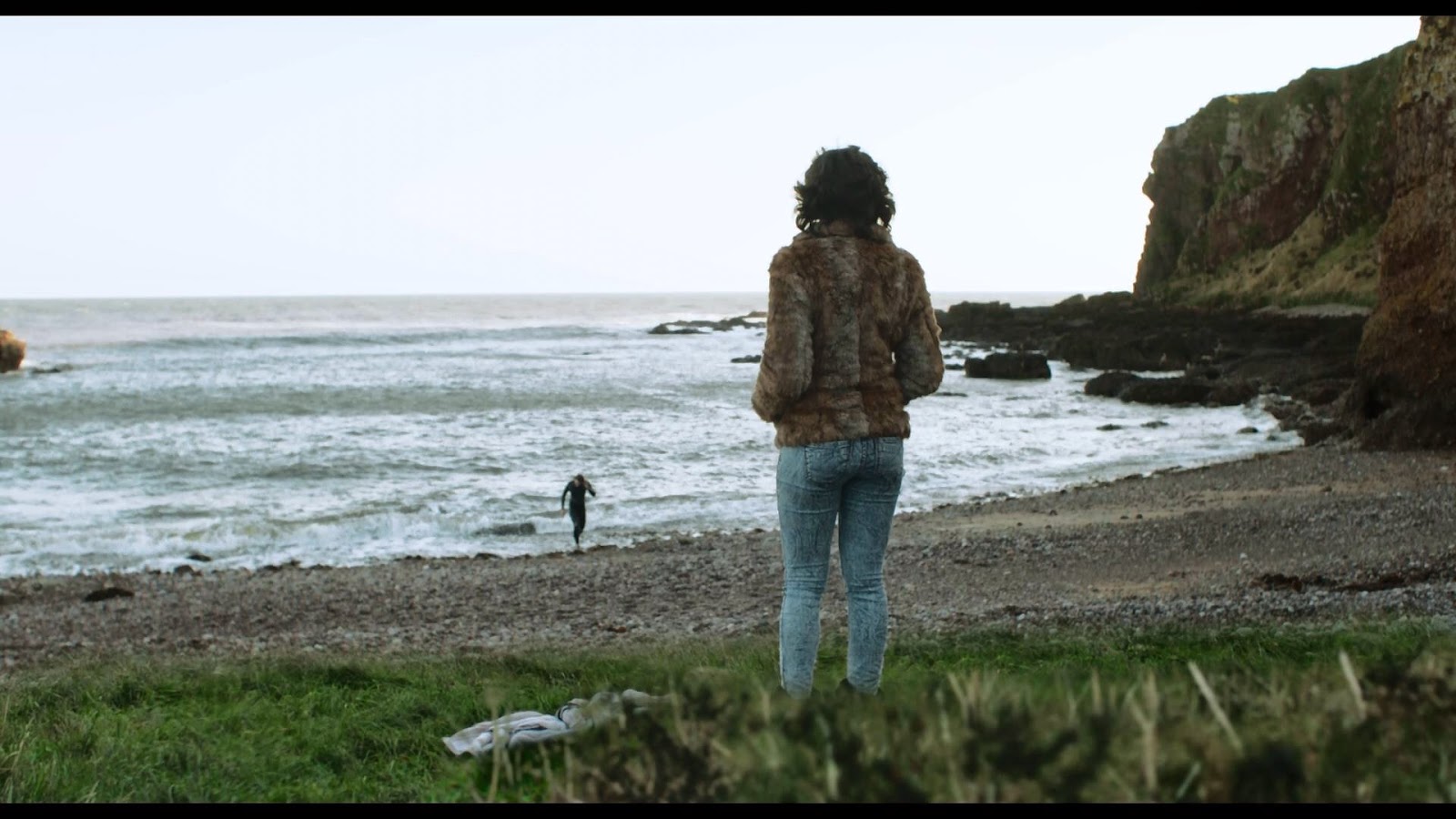Jonathan Glazer’s Under the Skin polarised critical and popular opinion from the moment it hit the festival circuit in the autumn of 2013. About twelve months later, the film was hailed by many critics as one of the best of the year and it made an appearance in numerous top 10-lists. The lose adaptation of Michel Faber’s 2000 novel stars Scarlett Johansson as an unnamed alien preying on humans of the male variety in Scotland. During its difficult, decade-long production history, the project went through numerous iterations and transformations. The final result was produced for a relatively modest £8 million and takes an almost experimental approach to narrative filmmaking. In the following paragraphs, I will show how Under the Skin is innovative on a technical as well as a textual level in a number of ways, particularly in regards to its attitude towards realism.
One of the most interesting aspects of the film is its much debated use of non-professional actors and of hidden cameras. During the shoot, an almost unrecognisable Johansson would drive around the streets of Glasgow and strike up conversations with unknowing passers-by. In order to capture these scenes, the filmmakers installed ten small digital cameras throughout the driver’s cabin. All ten angles were filmed at the same time. Jonathan Glazer would meanwhile give instructions to Scarlett Johansson via an earpiece. This required some inventive work from the technical department (the cameras had to be inconspicuous) and the editor (due to the enormous amount of footage shot simultaneously). The concept itself is obviously nothing new. In an article for The Dissolve, Matt Singer discusses the history of the hidden camera-technique from 1948’s Candid Camera to more recent examples such as Borat (Larry Charles, 2006) or Great World of Sound (Craig Zobel, 2007). The main differences between Under the Skin and its predecessors are genre and purpose. The vast majority of Singer’s examples are comedies, frequently made for television. Others include reality-TV and investigative documentaries. Glazer takes this gimmick and applies it to narrative, dramatic cinema. In the process, the director asks fundamental questions about the nature of the medium. The concept of realism and the desire to depict reality on screen have occupied cinema and the discipline of film studies since their inception. Many current directors use handheld cameras and/or long takes to convey an illusion of the real, but Glazer erases (or at least blurs) the line between truth and fiction. During her travels through Scotland, the alien encounters a series of characters that are played by a mixture of amateur and professional actors. Crucially, the objective gaze of the camera remains neutral and the audience often can’t distinguish between the two; between naturalism and performance. The only person who is clearly acting is Scarlett Johansson. The star plays on her image as a glamourous Hollywood celebrity. Like the extra-terrestrial protagonist, she looks completely out of place in the rough, gritty environment of Scotland. Performance style and stardom are thus used as a means to make Johansson’s character stand out even more from her surroundings.
Under the Skin establishes an original form of realism through the use of hidden cameras, which Glazer exploits in a truly innovative manner. The film is defined by the juxtaposition of two polar opposites; as Jonathan Romney put it in Sight & Sound: ‘the surreal and the very concretely real.’ Glazer combines the real life people, landscapes and locations with fantastical images and Mica Levi’s mesmerising soundtrack. During the eye-creation sequence in the beginning and the devouring-scene later on, the imagery even veers into the abstract. We see a viscous liquid flow towards a bright, red rectangle followed by several seconds of flashing lights and incomprehensible images. The realism of Under the Skin does not attempt to draw the audience into the narrative or to highlight a particular social issue. On the contrary, it arguably takes on Brechtian qualities and serves as an alienation device. Looking at humanity from an outside (an alien) perspective is one of the main themes of the film. The alien struggles to understand, and later emulate, human behaviour, and as spectators, we empathise with her confusion. The environment of the shopping centre Johansson visits in an early scene is extremely real and familiar to most audiences, yet the scene strikes us as artificial and strange. After seeing the alien hesitantly pick out an outfit, there are several brief, voyeuristic shots of women having make-up applied. This suggests that their behaviour is just as absurd and unnatural as the alien’s. Another sequence, in which Johansson follows a man into a nightclub, works in a similar fashion. She is ushered onto the dancefloor by a flock of excited young women who communicate through indistinguishable chatter. Partying seems like a strange, exotic ritual throughout the entire sequence. Both these scenes were shot with hidden cameras at real life locations. Glazer thus manages to subvert the traditional meaning of realism and uses it to provide us with an outside perspective. In Under the Skin, the screen is not like window, but like fairground mirror rendering a skewed image of ourselves.
Read my original review of Under the Skin here.


Never read a review as good as this one about the film <3
ReplyDelete